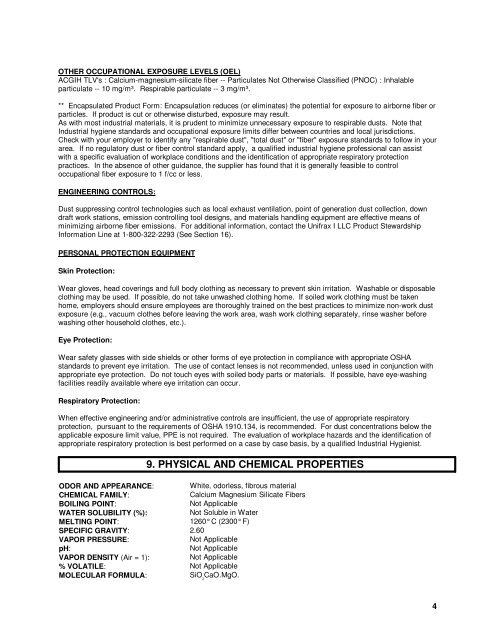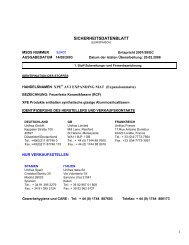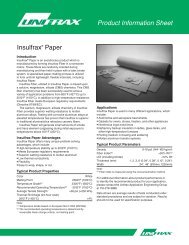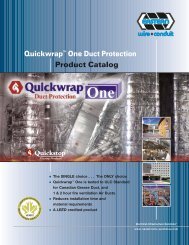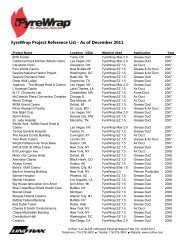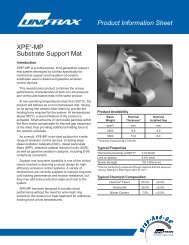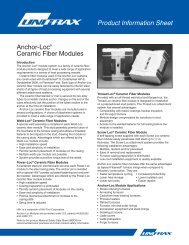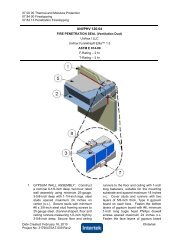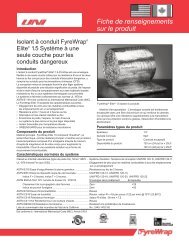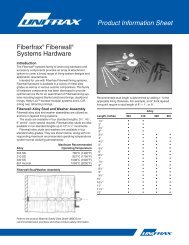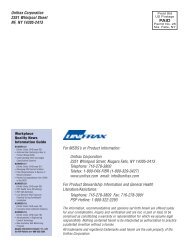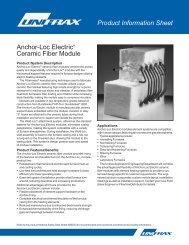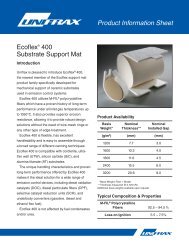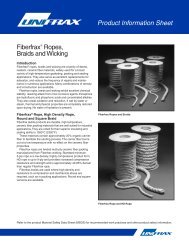Elite 1.5 Material Safety Datasheet - Unifrax
Elite 1.5 Material Safety Datasheet - Unifrax
Elite 1.5 Material Safety Datasheet - Unifrax
Create successful ePaper yourself
Turn your PDF publications into a flip-book with our unique Google optimized e-Paper software.
OTHER OCCUPATIONAL EXPOSURE LEVELS (OEL)ACGIH TLV's : Calcium-magnesium-silicate fiber -- Particulates Not Otherwise Classified (PNOC) : Inhalableparticulate -- 10 mg/m³. Respirable particulate -- 3 mg/m³.** Encapsulated Product Form: Encapsulation reduces (or eliminates) the potential for exposure to airborne fiber orparticles. If product is cut or otherwise disturbed, exposure may result.As with most industrial materials, it is prudent to minimize unnecessary exposure to respirable dusts. Note thatIndustrial hygiene standards and occupational exposure limits differ between countries and local jurisdictions.Check with your employer to identify any "respirable dust", "total dust" or "fiber" exposure standards to follow in yourarea. If no regulatory dust or fiber control standard apply, a qualified industrial hygiene professional can assistwith a specific evaluation of workplace conditions and the identification of appropriate respiratory protectionpractices. In the absence of other guidance, the supplier has found that it is generally feasible to controloccupational fiber exposure to 1 f/cc or less.ENGINEERING CONTROLS:Dust suppressing control technologies such as local exhaust ventilation, point of generation dust collection, downdraft work stations, emission controlling tool designs, and materials handling equipment are effective means ofminimizing airborne fiber emissions. For additional information, contact the <strong>Unifrax</strong> I LLC Product StewardshipInformation Line at 1-800-322-2293 (See Section 16).PERSONAL PROTECTION EQUIPMENTSkin Protection:Wear gloves, head coverings and full body clothing as necessary to prevent skin irritation. Washable or disposableclothing may be used. If possible, do not take unwashed clothing home. If soiled work clothing must be takenhome, employers should ensure employees are thoroughly trained on the best practices to minimize non-work dustexposure (e.g., vacuum clothes before leaving the work area, wash work clothing separately, rinse washer beforewashing other household clothes, etc.).Eye Protection:Wear safety glasses with side shields or other forms of eye protection in compliance with appropriate OSHAstandards to prevent eye irritation. The use of contact lenses is not recommended, unless used in conjunction withappropriate eye protection. Do not touch eyes with soiled body parts or materials. If possible, have eye-washingfacilities readily available where eye irritation can occur.Respiratory Protection:When effective engineering and/or administrative controls are insufficient, the use of appropriate respiratoryprotection, pursuant to the requirements of OSHA 1910.134, is recommended. For dust concentrations below theapplicable exposure limit value, PPE is not required. The evaluation of workplace hazards and the identification ofappropriate respiratory protection is best performed on a case by case basis, by a qualified Industrial Hygienist.9. PHYSICAL AND CHEMICAL PROPERTIESODOR AND APPEARANCE: White, odorless, fibrous materialCHEMICAL FAMILY:Calcium Magnesium Silicate FibersBOILING POINT:Not ApplicableWATER SOLUBILITY (%):Not Soluble in WaterMELTING POINT: 1260° C (2300° F)SPECIFIC GRAVITY: 2.60VAPOR PRESSURE:Not ApplicablepH:Not ApplicableVAPOR DENSITY (Air = 1): Not Applicable% VOLATILE: Not ApplicableMOLECULAR FORMULA:SiO2CaO.MgO.4


